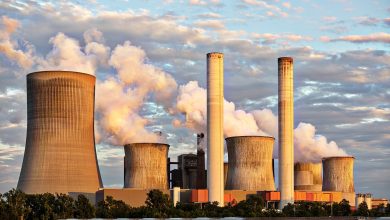China’s Coal Energy Paradox

The Global Coal Industry
For many decades, the coal industry has supplied the world with a reliable and inexpensive source of electricity. Coal has historically been a fossil fuel that has played a vital role in meeting the world’s energy and development needs. According to 2019 data from the World Coal Association, about 71 percent of global steel production and 38 percent of global electricity generation has been made possible by the coal industry. However, as world leaders have started to push forward with plans related to the implementation of the Paris Climate Agreement, the global coal industry has struggled to find a path forward. The pressure has been mounting from environmental advocates and natural resource specialists to reduce global dependency on coal-fired power plants. Since coal energy generation is representative of one of the biggest sources of global air pollution and greenhouse emissions, coal companies have struggled to maintain a balance between environmental sustainability and economic development. The challenge of finding a balance between sustainability and the coal industry is more visible in China than any other country.

Chinese Energy Demand
Chinese demand for fossil fuels has massively outpaced the country’s capability to boost its own domestic production of oil, gas, and coal. Over the past few decades, China’s need for abundant and inexpensive energy resources has grown significantly. With a total population of about 1.4 billion and a communist government that vehemently supports economic growth, China has long been one of the world’s leading consumers of coal. Because of its rapid population growth and rising levels of personal income, China’s energy consumption has risen to about 25 percent of the world’s total energy needs (Clemente, 2019). Since 2011, China as a whole has consumed more coal annually than the rest of the collective world (Levy, 2020). With its massive manufacturing cities along the county’s east coast, China has been heavily involved in the energy-intensive production of goods and commodities for exportation to many of the world’s developed nations. While total household energy consumption remains relatively low, the production of cement, steel, chemical products, electronics, and many other goods has sent Chinese energy consumption skyrocketing in recent years.
Increasing Coal Production
As the largest consumer and producer of energy in the world, the dynamics of the Chinese energy market has tremendous implications for the rest of the world. For coal specifically, China has single handedly saved the global coal industry from its own demise in recent years. As the drop in coal consumption in the developed nations of North America and Europe has taken a significant toll on global coal companies, developing nations likes China and Bangladesh continue to sustain very high levels of energy production and consumption from coal-fired power plants. In 2013 alone, China’s coal production reached about 3.68 billion metric tons, which is representative of 47.4 percent of the world’s coal production (Zhang et al, 2016). In addition to massive levels of coal production, China’s coal consumption has been rising a rate of about ten percent annually over the past decade (Heinberg, 2009).
One of the primary factors that has historically hindered China’s ability to raise the standard of living for its citizens has been the lack of reliable sources of energy. Prior to the 1990s, energy shortages constrained agricultural, industrial, and social development in China. The lack of affordable and reliable sources of energy discouraged international investors from opening business operations in China and prevented its citizens from rising out of tremendous levels of poverty, especially within the country’s rural regions. Moreover, when energy was available, China’s archaic power grid limited the disbursement of electricity. Before the latter half of the 1980s, a significant number of China’s central and eastern power grids were overloaded throughout the year, which initiated a system of peak-hour energy rationing. It wasn’t until the establishment of the National Power Grid Development Corporation that China was able to overcome much of its inefficient periods of energy gridlock.

Efforts to Modernize
Following the development of the National Power Grid Development Corporation, China was able to gradually modernize its energy grid and expand numerous other energy projects. After rising from its relatively primitive beginnings, China’s coal industry was eventually able to expand according to the needs of the country’s growing population. Coal output expanded significantly beginning during the 1970s and reached a total output of one billion tons annually by 1989 (Heinberg, 2009). The development of its modern coal industry helped to attract foreign investment, economic growth, and financial stability for the country as whole.
Beginning in the early 1990s, after the country had developed a relatively modern system of coal-fired power plants, Chinese government officials started to prioritize and implement a number of projects to support the county’s manufacturing industry. Coal became essential to sustain China’s modernization of its industrial sector. Moreover, the coal industry became one of the primary factors that helped to lift the country’s rural residents out of extreme levels of poverty. As the central government encouraged rural communities to open coal mines, this helped to expand economic opportunities in rural regions while also leading to increasing supplies of coal.
As China’s Soviet-styled economic planning came to an end in the 1990s, China moved towards more of an open-door policy for economic growth. These economic policies initiated a wave of new growth and development that sent the demand for energy soaring. However, after a series of unfortunate mine-related incidents, China began to implement mine safety standards in 1996 to address these issues. While the development of safety standards would help to propel the long-term viability of the country’s coal industry, coal output declined between 1996 and 2000 as a result of a number of mine closures. A number of mines were closed because of concerns related to safety and low productivity. In addition to the safety overhaul, Chinese energy leaders had hoped that closing inefficient mines would contribute to greater overall efficiency for the industry. In 1999, an average of 289 tons of coal were produced per Chinese coal miner. This was an extremely low production ratio when compared to the United States, which had been producing 12,000 tons of coal per miner (Heinberg, 2009).

Government Control
In an attempt to address the bloated coal mine workforce, the Chinese government moved forward with a radical reorganization of the coal industry. The reorganization attempted to entice foreign investors by converting a large number of small and inefficient mining operations into state-controlled assets. Under the control of the central government, Chinese officials were able to implement a variety of strategies to increase the efficiency of coal production. While the coal industry was still vital to China’s growing economy during the early 2000s, the reliance on coal had started to create a growing number of environmental challenges related to air and water pollution. In addition to making coal mining operations more efficient, the Chinese government started to research and implement clean coal technology during the 2000s in an attempt to reduce the environmental impacts of production and consumption. While the government had been successful at enhancing efficiency and reducing environmental impacts from some coal-fired power plants, the situation only worsened for a significant number of rural regions.

Environmental Impacts
Beginning in the 1980s, the Chinese government started to acknowledge the environmental ramifications of relying on a massive array of coal-fired power plants. As levels of air pollution continued to rise, the Chinese government found itself unable to effectively implement clean coal technology because of physical constraints related to water availability. Since one method of cleaning coal to reduce air pollution involves physically washing coal in water, a lack of water resources prevented China from implementing this technology to clean up its coal industry. Without enough water to implement clean coal initiatives, China struggled to achieve its pollution reduction targets that were established as part of the 1997 Kyoto Protocol. As it became clear that China was not going to be able to initiate plans to reduce pollution from its coal industry, the United States dropped out of the international environmental treaty in 2001 (Malakoff, 2007). After this, a wave of other developed countries also dropped out of the agreement, which ultimately had very little impact on achieving international emissions reduction targets.
Today, after decades of trying to find a balance between supporting the coal industry while also reducing air and water pollution, China is still home to more than half of all coal-fired power plants in the world (Brown, 2020). China’s dramatic economic expansion has continued to accelerate the demand for coal in recent years, even as environmental concerns continue to intensify. Even with significant investments in alternative forms of energy like solar, wind, and hydropower, China would not be able to sustain its pace of economic growth without increases in coal production. Many economists believe the future availability of coal will end up dictating economic growth in China, even as the rest of the developed world progressively moves away from coal as a source of energy. While China still may be home to more coal-fired power plants than any other country, its total ratio of carbon emissions emitted per person is less than half of the United States’ emissions per person (Levy, 2020).

The Energy Paradox
According to the Organization for Economic Cooperation and Development, China’s per capita ratio of energy consumption is not expected to reach commensurate levels of per capita energy consumption of developed nations within the near future. While China is the world’s largest emitter of greenhouse gas emissions, its massive population reduces the country’s overall per capita ratio of energy consumption. Moreover, the country continues to make progress on reducing emissions and cutting air pollution. One major change related to environmental regulation has been the transformation of the Ministry for Environmental Protection into the Ministry of Ecology and Environment. This new governmental entity employs a much broader list of environmental responsibilities, from the management of air pollution to the management of groundwater resources. These environmental responsibilities were previously regulated through a slew of other governmental departments. Environmental advocates hope that placing these responsibilities under a single entity will create more robust progress on environmental initiatives in the future.
Even as China has been moving forward with environmental progress, the country continues to expand the development of coal-fired power plants. In 2019 alone, China added 37 GW of new coal-related energy capacity (Brown, 2020). Economists and energy analysts expect this growth to continue into the future, since the government recently cut regulations related to the development of new coal-fired power plants. By January of 2020, China already had 135GW of new coal-power capacity under construction or undergoing the permitting process (Brown, 2020). According to research conducted by an NGO known as the Global Energy Monitor, China is expected to bring online new coal capacity within the next few years that would be equivalent to half of the current coal capacity in the United States. Thus, many energy analysts and environment advocates say that China has entered into an energy paradox. The country continues to move forward with initiatives to cut emissions, while simultaneously implementing plans to develop new coal-fired power plants.
Sources
Brown, E. (2020). “A glut of new coal-fired power stations endangers China’s green ambitions.” The Economist.
Clemente, J. (2019). “China is the World’s Largest Oil & Gas Importer.” Forbes.
Heinberg, R. (2009). “Blackout: Cola, Climate, and the Last Energy Crisis.” New Society Publishers.
Levy, G. (2020). “China’s coal-fueled boom.” Ecologist: The Journal for the Post-Industrial Age.
Malakoff, D. (2007). “An Examination of the Kyoto Protocol” NPR.
Song, A. (2018). “Here’s how China is going green.” The World Economic Forum.
Thomson, E. (2003). “The Chinese Coal Industry: An Economic History.” Taylor & Francis.
Zhang, Y., et al. (2016). “Residual coal exploitation and its impact on sustainable development of the coal industry in China.” The Journal of Energy Policy.



